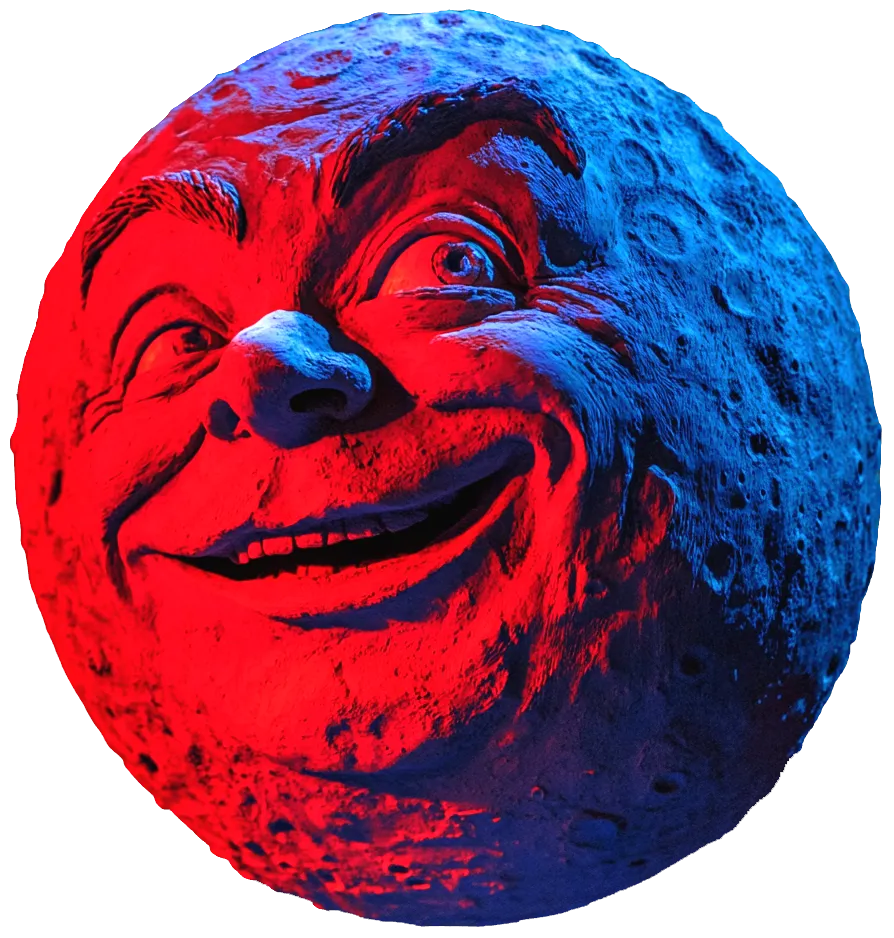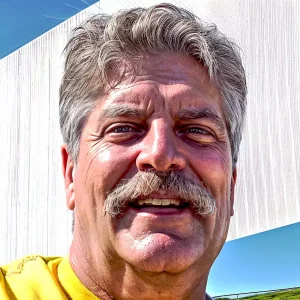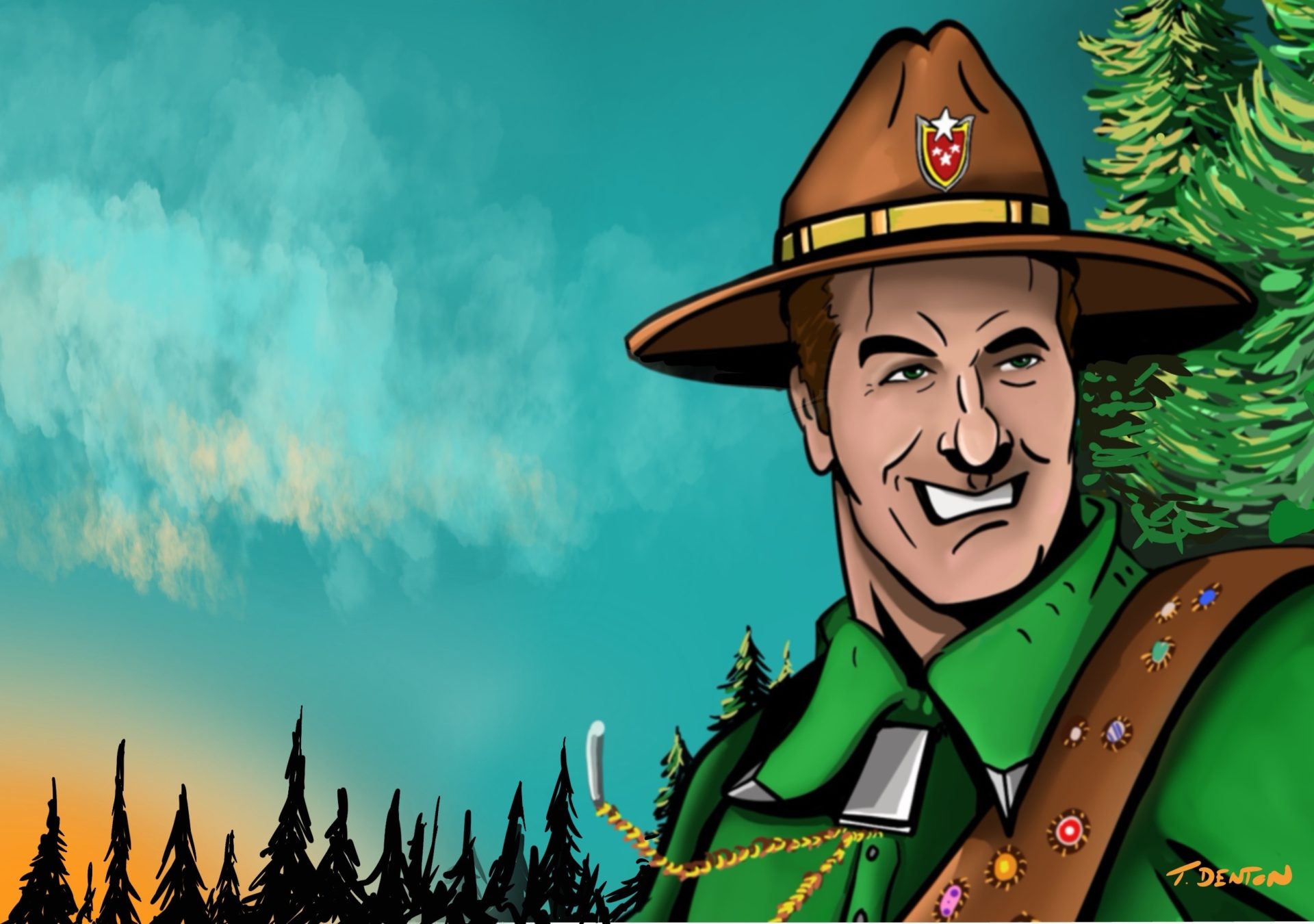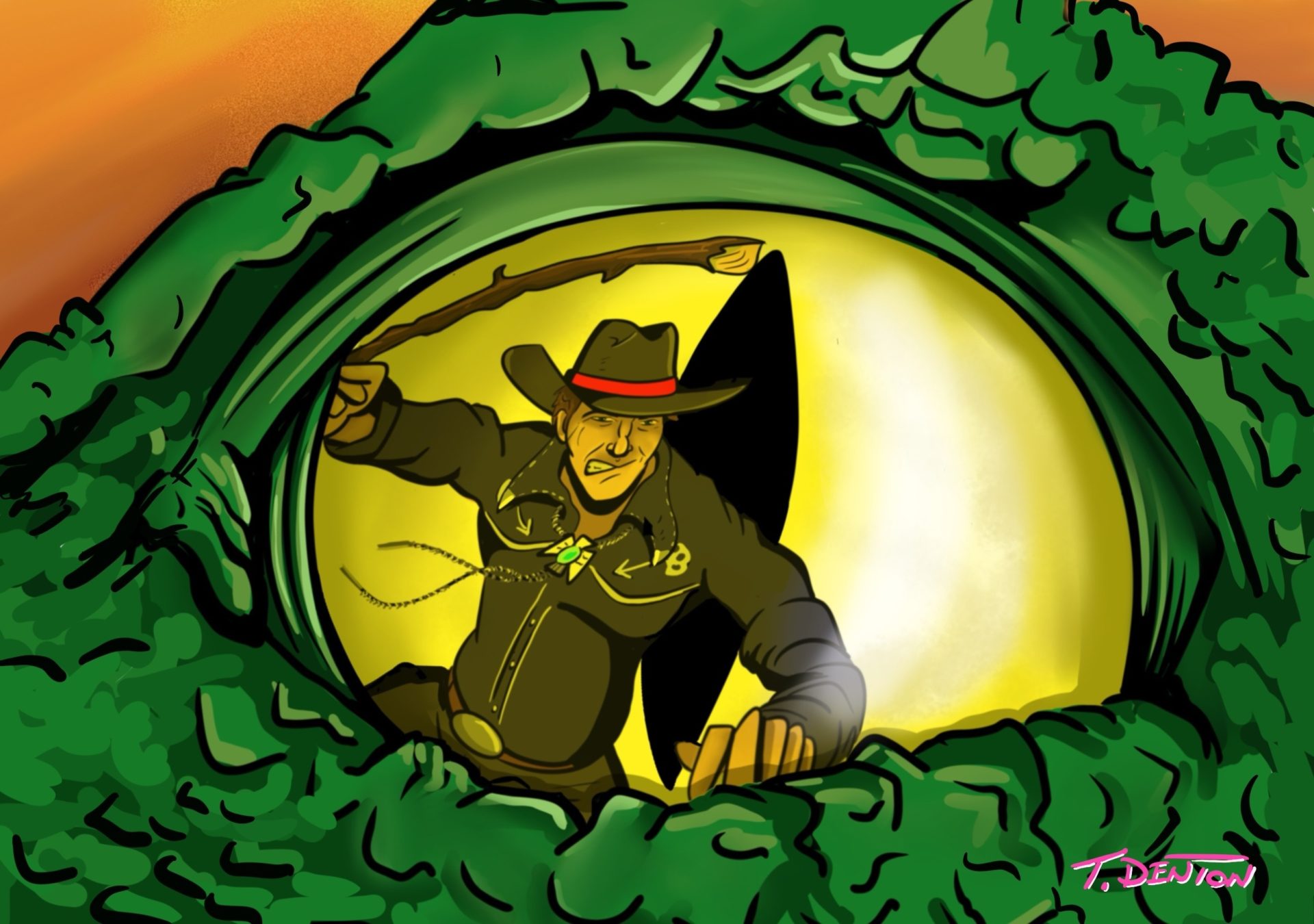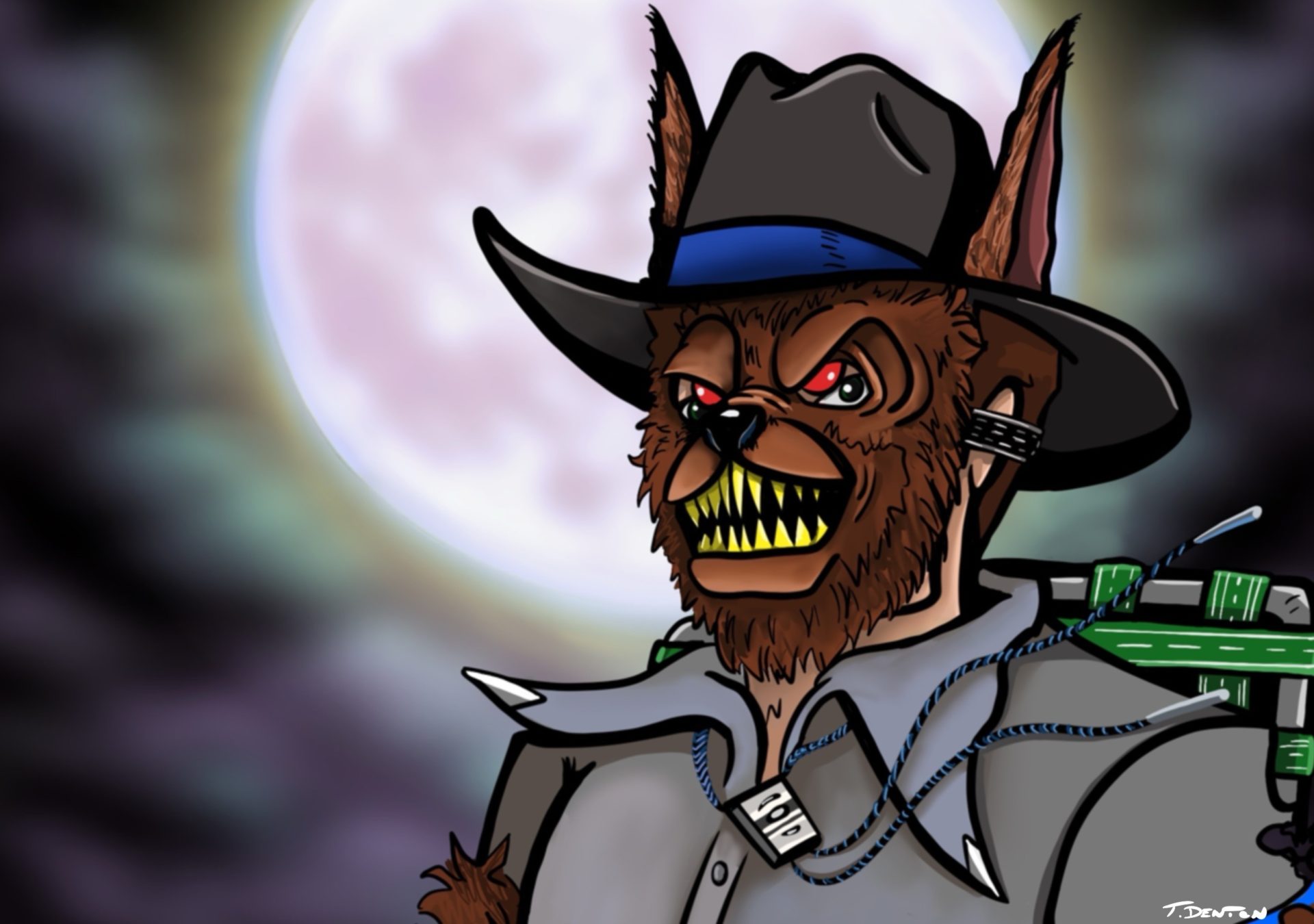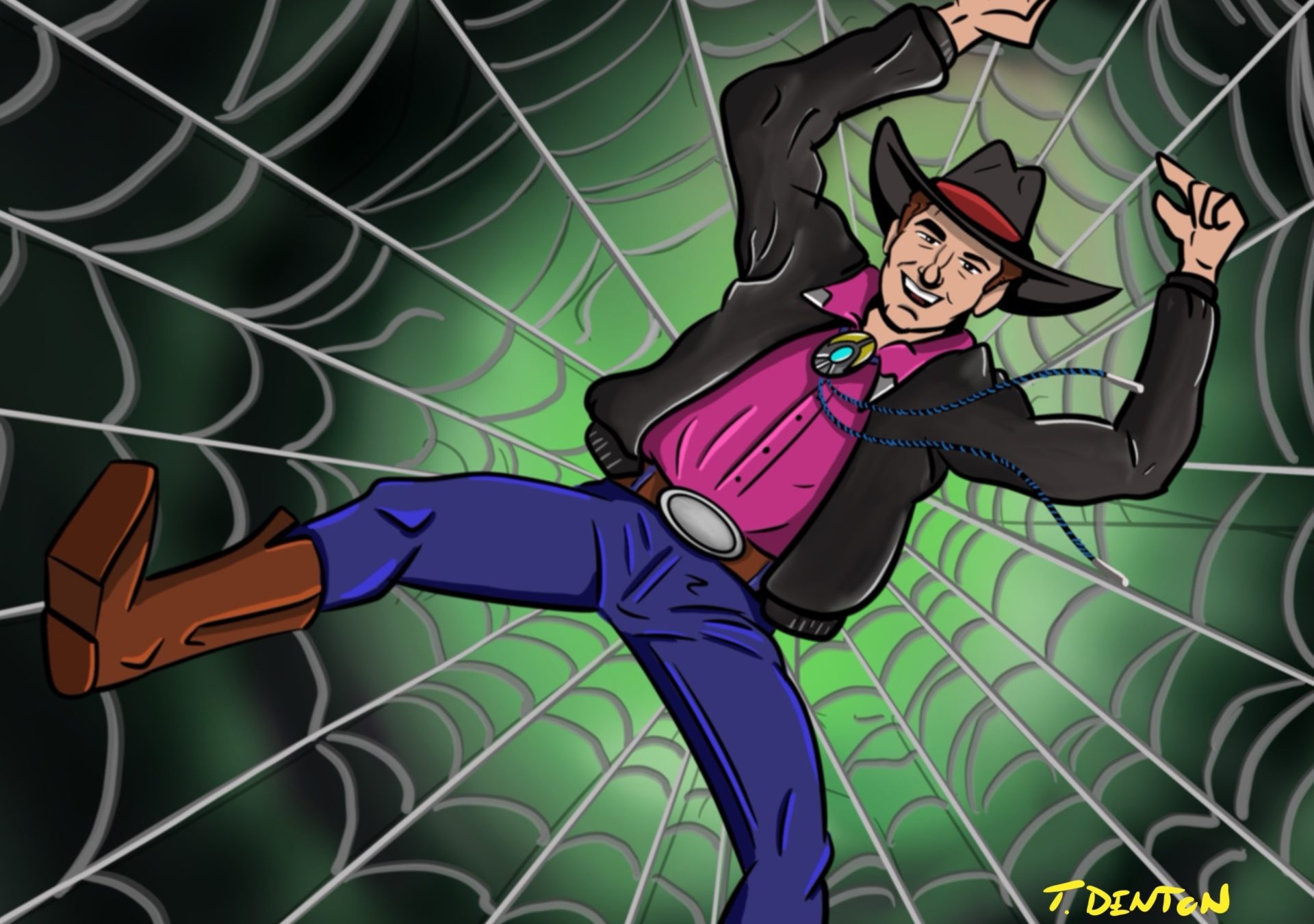
Art by T.J. Denton (@TDenton_1138 on Twitter) — visit his store!
Those who hoped the first Summer School class at Shudder U. would be an easy A, a dipping of the toes in the kiddie pool, were undoubtedly surprised to find themselves thrown instead into the deep end of the diving area. The first course at Briggs High School of the Cinematic Arts was Theoretical Drive-In Physics. The text was Donnie Darko.
Joe Bob had much ground to cover before the film could begin: Einstein-Rosen Bridge Theory, Weyl’s Mass Analysis of Electromagnetic Field of Energy, the 2nd Law of Thermodynamics, and more. You know, the standard stuff you need to know for understanding time travel. Plus important film knowledge including the granddaddy of time travel films, George Pal’s 1960 The Time Machine based on H.G. Wells’ 1895 novel.
Darcy the Mail Girl was, as always, the star pupil, but she wasn’t the only student. A very large, rather ugly bunny rabbit entered the class a little late. He took a seat, complaining that the classroom wasn’t “rabbit accessible.” He seemed to be a big fan of the evening’s film, believing the rabbit in the film (who looked remarkably like this rabbit) deserved an Oscar.
Fortunately, this wasn’t one of those purely theoretical classes. Professor Briggs provided some practical application and experimentation. Joe Bob built a wormhole (also known as the Einstein-Rosen Bridge) and hurled Darcy through the space-time continuum.
Was it safe? Maybe. Maybe not. But how can Science and Education progress without experimentation?
Darcy did safely return from her journey after traveling back in time to change Soft Drinks/Pop/Soda/Coke history as we know it.
We try not to throw the term “hero” around too loosely, but our Mail Girl saved us all from a perilous fate. If not for her, we might all today be drinking “New Coke.” Her feat led to an erudite discussion of carbonated beverages.
Now, back to the evening’s film, and there was indeed a film: Donnie Darko. Joe Bob didn’t want to talk about the plot of the film, except to say that many found it incomprehensible on first viewing. And second and third and fourth viewing.
He assured the class it was still very much worth viewing.
After Richard Kelly graduated from high school in 1993 and film school in 1997, he was looking for some way to get into the filmmaking business. So he wrote a script that started some buzz in the filmmaking community because it was so different from anything people had read before. He received some offers for the script, but those offers were dropped when Kelly told them he would need to direct the film.
Unexpectedly, someone was willing to allow Kelly to direct. Drew Barrymore (yes, E.T., Scream, Charlie’s Angels, that Drew Barrymore) was looking to produce films. She not only agreed to allow Kelly to direct his own script, she also raised a budget of $4.5 million, pretty impressive in 2001 for a first project.
Kelly was given a whole lot of free range in directing because he was the only one who really understood the script. He gave the relatively unknown Jake Gyllenhaal his first lead role (and a smaller role for Jake’s more-famous sister, Maggie, who played his sister.) It was the screen debut for Seth Rogan and was the last role for veteran actress Patience Cleveland.
When the film was chosen for an opening night debut at the Sundance Film Festival, it looked like quite a coup, but the film was not well received. It even received some boos.
Hopes of distribution looked grim. The best to be hoped for was a discount sale to the Starz channel.
But Newmarket Films and producer Bob Berney stepped in a saved the day. In fact, Berney, an old friend of Joe Bob, was a guest lecturer in the evening’s class.
Berney told how Newmarket secured a limited release for the film in October of 2001. Unfortunately, the film features a disturbing airline accident, and few in the month following the jet airline attacks on the World Trade Center and the Pentagon wanted to see the film under such circumstances.
Berney and Newmarket didn’t give up. The home viewing market during the transition from videotape to DVD was booming. Donnie Darko spoke to millennials who recognized themselves as the only sane individuals in a world gone mad while being considered mad themselves.
The film developed a cult following, and it was soon so popular that it returned to theaters for midnight screenings. Kelly was even allowed to produce a director’s cut of the film (that Kelly himself said should only be viewed after seeing the theatrical cut).
So class, what happens in the film? We can learn a bit from Joe Bob’s Drive-In Totals (please take notes, students):
So concludes the first session of Summer School. But if you hope to get your diploma, you will need to attend the next two sessions.

